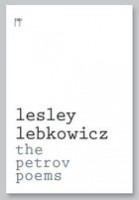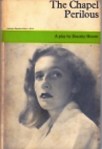David Williamson, The Removalists (Currency Press 1972)
Last night the Book Group had an extracurricular outing to see David Williamson’s play The Removalists at the New Theatre (which is about as new as the Pont Neuf in Paris).
Written before the outing: I have a soft spot for this play. I saw the first Sydney production at the Nimrod Theatre in 1971, an astonishing 50 years ago, as part of the exhilarating resurgence of Australian theatre at the time. In early 1973, the first copies of the book arrived in the Currency Press office soon after I started working there in my first real job – it was a big seller for them, and as far as I can tell is still selling well. I visited the set of Tom Jeffreys’ film in 1974, and was in awe of the intense inner focus of actor John Hargreaves as he waited for the cameras to roll.
Before our theatre outing I revisited the book – a first edition, stiff and yellowing on a shelf near Alex Buzo’s Macquarie and Dorothy Hewett’s The Chapel Perilous. In a successful bid for the educational market, Currency’s founders, theatre critic Katharine Brisbane and her scholar husband Philip Parsons, prefaced the text of the play with two essays, ‘Reflections on Violence’ by historian Ian Turner, and ‘Authority and Punishment’ by eminent defence lawyer Frank Galbally (who is mentioned in the play) and Kerry Milte (who was soon to become the subject of interesting dramas of his own). John Bell, who directed the Nimrod production, has an afterword, and the front and back covers fold out to reveal cartoons by Bruce Petty. I haven’t seen the current edition of the book, but the image of the cover on Currency’s web site mentions Galbally and Turner, but not Petty.
This prefatory material is all about violence and authority. Ian Turner sums it up well:
The Removalists raises three questions: one sociological (is Australian society violent of its essence?); one political (do the forces of ‘law and order’ rest on violence?’); one psychological (do all of us have the kinds of aggressive instincts or behaviour patterns which Williamson depicts?).
The essays talk about the streak of male violence in Australian culture (what would today be called toxic masculinity), and they talk about historic violence against First Nations peoples and Asians, especially the Chinese on the goldfields. The domestic violence at the heart of the play is barely mentioned. John Bell does offer an early version of what has become a common observation abut Williamson’s writing: strong women actors are necessary to stop the female characters from ‘degenerating into stilted, unconvincing types’. The edition of the book currently on sale may have been updated. Certainly, in 2014 Currency published ‘The Unexpected Feminist’, a feminist reading of the play by Van Badham (online here).
In case you don’t know the plot: two women, sisters, turn up at a two-man (sic) police station asking for a document establishing that the younger woman has been assaulted, in order to legitimise their plan to move her and her baby out of the marital home while her husband is out at the pub; the older policeman, with sleazy motivation, offers to come and help the move; the younger policeman, fresh out of training, goes along unwillingly; at the home, the husband comes home unexpectedly, and the situation escalates into lethal violence.
Reading the text, I imagine that a successful staging in 2021 would have to take into account our much better understanding of domestic abuse and violence, and our (I hope) intolerance of having it minimised. Though the play doesn’t endorse the way the sergeant and the husband make light of the DV, it isn’t much interested in it except as precipitating violence among the men. Some of the minimising language could have come from the pages of Jess Hill’s See What You Made Me Do (my review here). John Bell’s comment about how much depends on the women actors has become much weightier with age.
The outing: Nine of us, including two ring-ins, had a cheerful Thai dinner across the street from the theatre. When we crossed over 15 minutes or so before lights down, fate decreed that the third row from the front, in my opinion the best seats in the house, was empty. There was a sizeable audience, almost all of whom I’d guess were high school students who have the play as a set text. It was exhilarating to be in a big live audience full of youthful energy – for some of the Book Group it was the first time they’d sat shoulder-to-shoulder in a theatre since the beginning of Covid days.
I had been wondering how the play would deal with #MeToo. It turned out that Johann Walraven, the director, was more interested in how it relates to #BlackLivesMatter. This was announced in the first moments. As the lights come up, while the two policeman are seen in the shadowy police station on stage right, an Aboriginal man watches a flickering TV screen in his living room on stage left. He turns off the television and walks out of the room, the lights come up on the police station, and the play as written, in which all the other characters are white, begins. The production doesn’t take any liberties with the script, but the power plays of the other characters in relation to Kenny, the husband (Alfie Gledhill), are now seen through a racialised lens. In a climactic moment there’s a George Floyd reference that feels absolutely integral to the play, and is gutting.
The misogyny was still unsettling. It’s there from the opening scene in which the Sergeant gives voice to the myth of false rape claims, through Kenny’s minimising of his violence against Fiona (Eliza Nicholls), to a sleazy discussion of sex-workers towards the end. It’s meant to be unsettling: it’s the thing about the Sergeant that makes us realise he’s something much uglier than a harmless scallywag who plays the system. And Kenny’s talk of ‘love-taps’ is echoed by the Sergeant later in reference to his own ferocious assaults on Kenny – no minimising possible there, as we’re seeing it for ourselves. I imagine it would have to be written differently today, but the audience is left in no doubt that this is a scene that the two women are smart to be getting out of.
My abiding impression from the 1971 production at the Nimrod Street Theatre is of Max Phipps as Ross, the young constable. It was his transformation from gormless innocence to rage, violence and cunning that burned the play into my memory. Last night, the play belonged to Laurence Coy as the Sergeant. Lecherous, self-righteous, bullying, vicious, self-pitying, out of control, blustering, I’d thought of the character as little more than a crucible for Ross’s transformation, but in this production he’s a tortured human being, and Ross (Lloyd Allison-Young) is pretty much collateral damage. Possibly the most powerful moment last night wasn’t in the big, horrifying violence, but a small moment that almost didn’t happen. In the middle of a rant about self-control as the test of manhood, the Sergeant shouts that his wife had twenty-seven kidney fits after childbirth. Kate (Shannon Ryan), the obnoxious older sister, moves towards him, and says gently, ‘Twenty-seven kidney fits. That’s terrible.’ In a fleeting moment of humanity, the Sergeant says, ‘Yes. We gave her up at one stage.’ In classic David Williamson style, the moment is undercut with some rough humour, but the actors caught this tiny wisp of tenderness and vulnerability and made sure we saw it.
Full disclosure: Laurence Coy is a member of the Book Group – but he really is that good in this play.








